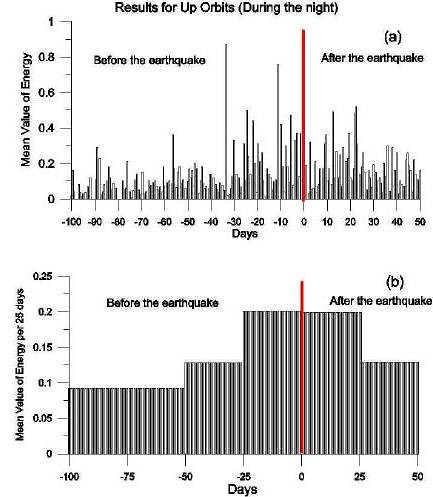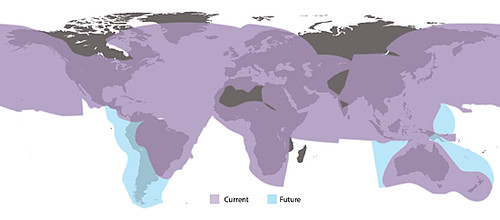Heard Over Haiti
Thursday, December 9th, 2010

The DEMETER spacecraft’s instruments assisted geophysicists with their analysis of ultra-low frequency electromagnetic waves before and after the Haiti earthquake in January, 2010. DEMETER stands for Detection of Electro-Magnetic Emissions Transmitted from Earthquake Regions.
You can download the paper here and read for yourself. Personally, I like MIT’s Technology Review and how they explain it to us…
The anecdotal evidence of electromagnetic effects associated with earthquakes is legion. Various accounts link earthquakes with mysterious light and heating effects. Then there is the widespread evidence that certain animals can sense impending quakea, possibly because of a sensitivity to low frequency electric fields.
But good data is hard to come by. Geoscientists have been measuring the currents that flow through Earth beneath our feet for over 100 years. These so-called telluric currents are thought to be generated by friction and piezoelectric effects within rock. And the flow of electrons they cause has been linked to various atmospheric phenomena such as thunderstorms.
But the role these currents play in earthquake physics is unknown. It makes sense that any currents generated by friction and piezoelectric effects should be dramatically influenced by the relative movement of different parts of the crust.
But these effects occur over vast distances and at frequencies that are hard to measure and difficult to separate from background noise. Which is why DEMETER was launched , (DEMETER stands for Detection of Electro-Magnetic Emissions Transmitted from Earthquake Regions).
Now Michael Athanasiou at the Technical University of Serres in Greece and a few buddies say that DEMETER spotted good of evidence of a change in ultralow frequency radio waves in the ionosphere above Haiti in the run up to the quake. "The results reveal a significant increase of the energy of ULF waves, up to 360%, for a period of one month before the main earthquake compared with the energy of the background," they say. That’s a dramatic increase. These emissions dropped gradually in the month after the quake.
The implications are interesting. Athanasiou and co say: "The results of this paper clearly indicate that ULF electromagnetic waves can be very useful in revealing possible precursor seismic phenomena."
That’s carefully worded and for good reason. Any talk of earthquake prediction needs to be qualified with a good deal of hedging. It may well be that the crust generates more low frequency waves in the build up to an earthquake but there may be other mechanisms that produce a similar signal but are not linked to quakes.
These effects would have to be teased apart before a forecast of any use could be made.
Then there is the problem of the timescale over which these emissions are produced. The increase in pressure that causes earthquakes occurs over geological timescales. It’s not yet clear how this process changes the emission of low frequency em waves.
That means the predictions from this kind of data may be never be any better than the ones geophysicists already make, ie giving the percentage likelihood of a big ‘un in the next 50 years, for example. That helps with things like building standards (in developed countries that can afford to implement them) but it is not much use in preventing the kind of catastrophe that hit Haiti in January.

(a) The average energy of the pre-earthquake signals recorded by the satellite during night-passing, for 100 days before the main earthquake as well as for the aftershock signals for 50 days. (b) The average energy per 25 days of the observed signal during the night, for 100 days before and 50 days after the earthquake.









